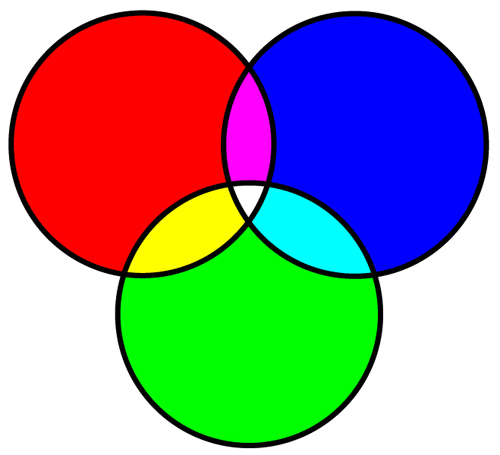Classic literature or art
is above all works that survive through institutions like schools, religious
traditions, or learned societies. Classical literature
enjoys a long
shelf-life but
its popularity may be limited to literate, elite, or schooled culture. Compared
to popular literature, classic literature is under-exposed
except in schools.
"A classic is something everybody wants to have read, but no one wants to
read."—Mark Twain
Twain's line is funny for sympathizing with humanity's
weaknesses, but "wants to have read" admits the prestige or social capital of
classics.
In Literature's ongoing balancing act between
entertainment and education, classic literature tilts toward education or learning and
is less likely to
indulge cheap thrills or escapism.
"Education" may include
 broadening the mind,
broadening the mind,
 cultural literacy,
cultural literacy,
 vocabulary-building,
vocabulary-building,
 modeling,
modeling,
 ethics,
ethics,
 empathy,
empathy,
 critical thinking,
critical thinking,
 cultural or historical critiques
concerning social or personal justice,
cultural or historical critiques
concerning social or personal justice, mental-emotional exercise,
mental-emotional exercise,
 attention-span extension
(deferred gratification), and discipline.
attention-span extension
(deferred gratification), and discipline.
Popular literature and culture are what most people want to read,
largely because they're easier and more immediately gratifying. They stick to proven formulas (as in "sequels" or
"knock-offs") to capitalize on previously-proven winners. They're
familiar and unchallenging, in contrast to the demands classic literature makes
on a reader.
A classic text,
instead of being highly predictable, self-consciously innovates, extends, reforms, or
even parodies previous styles and
contents from earlier texts in its tradition. Like evolution, classic literature continues what has come before but
also adapts to fresh experience and challenging knowledge. (Popular
literature also changes but follows rather than leads, supporting status quo.)
A simple formula for classic literature is "a book that
won't stay closed." A classic text keeps producing meaning for one generation
after another, in different contexts, for audiences with different mind-sets and
needs—even though the text still speaks with the same words!
Classics don't always stay classics, though.
Competition from new texts is always crowding out some older ones, and tastes
and needs change.
In sum, what counts as "classic literature" remains
fairly stable but also changes according to what's being written, what gets
taught, and who's sitting in the classrooms. (See representative literature
below.)

Popular literature or art
is the kind of literature that readers talk about excitedly and want to read as
though it is news or a change in lives of people they care about—for instance, a
new installment in a series like Twilight, Hunger Games, Tom
Clancy's novels featuring Jack Ryan, or any other detective, spy, or action
series with a glamorous, super-competent hero or team.
Instead of surviving indefinitely in schools and libraries, popular literature
lives and dies by the momentary marketplace when it appears in popular culture. Successful popular
literature sells well and becomes well-known to a wide audience, but compared to
classic literature or art it is often over-exposed, shorter-lived, and soon
forgotten or replaced with follow-ups, sequels, etc. (e.g., hit songs on the radio sound old a month or year
later).
Sentimental style, sensational events, and stereotypical formulas like sensitive vampires, exploding
helicopters, helpful dogs, and lost children are predictable, but they please wide audiences by
reinforcing familiar tastes and attitudes, confirming what everybody already
thinks and appealing to what is
already known.
(In contrast, classic literature usually takes you beyond your
comfort zone.)

Representative literature /
art
(sometimes called "multicultural," "diverse,"
"marginalized," or
"under-represented")
is
often
neglected or unknown except by special audiences, or written by
marginal or repressed races, classes, or genders.
 Popularity or status of representative
literature may
change in relation to social needs.
Popularity or status of representative
literature may
change in relation to social needs.
 Representative literature challenges conventional wisdom and styles from outside.
Representative literature challenges conventional wisdom and styles from outside.
 Representative literature's style may
not fit perfectly with
dominant-culture styles, but it may challenge or refresh what's become old
or "official."
Representative literature's style may
not fit perfectly with
dominant-culture styles, but it may challenge or refresh what's become old
or "official."
 Historic
events or references may be unfamiliar to dominant-culture
audiences.
Historic
events or references may be unfamiliar to dominant-culture
audiences.
 However, genres and styles
of multicultural outsiders may vary expectations or norms to point of exclusion.
However, genres and styles
of multicultural outsiders may vary expectations or norms to point of exclusion.
 Traditionally-schooled readers may wonder, "What do I do with that?" (The
outsider text may challenge ability to read with other texts in schools.)
Traditionally-schooled readers may wonder, "What do I do with that?" (The
outsider text may challenge ability to read with other texts in schools.)
 Representative literature may enjoy some freshness or appeal by being previously
unknown or marginalized, eliciting Romantic
support for the underdog or outsider.
Representative literature may enjoy some freshness or appeal by being previously
unknown or marginalized, eliciting Romantic
support for the underdog or outsider.

|
|
Classic
|
Popular
|
Representative
|
|
Sales / Audience
|
Usu. Low on
publication, but critical praise > libraries > anthologies > academy
|
Usu. high sales
on publication, but lack of critical praise limits “shelf life”
(exception: family favorites)
|
Local or
special audiences? “unofficial" (but “special collections”)
|
|
Style / appeal
|
Self-conscious,
learned, refined, controlled; intellectual, ahead of time
|
Colloquial; less self-conscious, "out of control," sentimental,
predictable
|
Non-academic,
Non-standard. “A voice is heard”; representation for under-represented.
|
Genres
|
Reformulated,
advanced, played with
|
Formulaic
with contemporary innovations
|
sometimes hard to
Categorize; e.g., autobiography / fiction
|
|
Attitude toward literary tradition
|
Reverent?
respectful, hierarchical. The tradition is known and acknowledged.
|
Irreverent or
oblivious; populist, democratic; writer may know and redevelop
previous models but doesn't assume reader has ever read anything else.
|
Ambivalent:
desire for acceptance yet acknowledgement of differences
|
|
Range of reference
|
Historical,
mythological, classical, "timeless"
|
Contemporary,
popular, passing scene; “life’s rich pageant” but often chaotic or
limited to current scene
|
Down to earth,
but relevance may be elusive to mainstream readers (Why telling me this?
What context? Culture confusion)
|
|
Gender / ethnic / class ID
|
"DWEMs": Dead
White European Males + a few women & people of color (Dickinson,
Douglass,
Wharton,
Cather, O'Connor, Ellison, Morrison); time, leisure required for
production / consumption
|
Women writers
well represented; audience largely female; other pressing concerns
(family?) require rapid production / consumption
|
Under-represented ethnic groups; sometimes language differences, +
reading habits may differ (continuation of oral traditions?)
|
Religion
|
Knowledgeable but “cool” or distanced; single
religious traditions become “relativized” in vast range of reference (e.
g., Emerson)
|
“Sentimental” (e. g., parent reclaims lost child /
sheep) but familiar, comforting, plus casting of evil and social wrongs
into gothic forms
|
Evangelical or “hot” religion often as basis of
emerging identity, claims for equality; tradition gains power as range
of reference diminishes
|
|
Other factors—esp. appeals to literary study
|
Classics often benefit from repeated readings;
“book that stays open” + classics refer to each other, so one gains
mastery over reading career
|
popular literature is easy to process;
“camp” pleasures vs. redemption of lifelong investment. Popular
literature typically doesn't benefit from repeated readings
|
Deepens apparently “new” tradition: "They were
saying that then?” (e.g. 19c feminism; equal rights for all)
May benefit from repeated readings as one learns to
read another culture.
|

These categories are not
mutually exclusive
|
Authors both Classic & Popular
|
Authors both Classic & Representative
|
Shakespeare
John
Bunyan (The Pilgrim's Progress)
Daniel Defoe (Adventures
of Robinson Crusoe, Moll Flanders)
Charles Dickens (Great Expectations, A Christmas Carol)
Edgar Allan Poe
Charlotte Bronte, Jane Eyre
Susan B. Warner, The Wide, Wide World
Mark Twain
John Steinbeck (Grapes of Wrath, Of Mice and Men)
|
Frederick Douglass
Langston Hughes
Toni Morrison
Sandra Cisneros
Chinua Achebe
Ngugi Wa Thiongo
Louise Erdrich |

Additional notes
Popular literature meets people where they are, confirms
their attitudes, values, or self-identifications. It "pushes their buttons."
Formulas
and genres are used more or less unconsciously or without embarrassment:
 "If
this is an action movie, when does the helicopter explode?" (Or, "When does
the hero leap through a shattering glass window?")
"If
this is an action movie, when does the helicopter explode?" (Or, "When does
the hero leap through a shattering glass window?")
 "If
this is a gothic thriller, when's the first scream in the night?" (Or, "When's the
first turn-around-and-gasp?")
"If
this is a gothic thriller, when's the first scream in the night?" (Or, "When's the
first turn-around-and-gasp?")
 "If
this is a romantic comedy, when does the normative white heterosexual couple meet cute?"
"If
this is a romantic comedy, when does the normative white heterosexual couple meet cute?"
Popular
literature throws a lot of contemporary junk into a miscellaneous mix: every
page has something that excites or soothes or otherwise interfaces with familiar
needs and satisfactions.
Classic literature often involves
"deferred gratification," long attention spans, and unanswered
questions or unresolved problems. (Since classic literature doesn't
often offer a simple conclusion or wrap-up, the text remains alive in people's
minds and continues to challenge future generations.)
Plus classic literature strives for
"compositional integrity": parts aren't just thrown together but fit
carefully into larger patterns of meaning.
Representative literature:
Religious (or moral) content is sometimes foregrounded,
whereas for the dominant culture religion is often repressed, marginalized, or
carefully integrated into a secular mix.
Political & historical issues are introduced,
often highlighting past injustice and
victimization, which complicates "one story" of America's or the
world's people.
How is the mix of Classic, Popular, and
Representative literature shaking out nationally
in terms of what people read in schools?
Classic literature still dominates. Teachers teach what they learned
as students.
Possible changes afoot:
Literature > "Humanities,"
inter-disciplinary study, team-teaching with history, art, etc.
"Read whatever, but
read." > reading
list becomes what students are capable of reading or willing to read rather than
what they should read
Literature courses will probably hang on,
more or less.

Example of
Popular Literature: film review of Battleship (2012)
Aliens, Your Weapons Are Utterly Useless Against Our
Rogues
by Neil Genzlinger,
New York Times
17 May 2012
You would think that after
intercepting broadcasts of science-fiction movies for decades,
extraterrestrials would know that if they want to conquer us Earthlings
they need to take out our lovably rebellious rogues and our
unexpectedly heroic nerds.
Certainly
the makers of "Battleship," a cacophonous new special-effects
extravaganza inspired (sort of) by a game youngsters once
played with pencils and graph paper, have studied those old
movies. You can tell because they seem to have borrowed rather a lot
from them.
"Battleship,"
the latest
filmmaking project of the Hasbro toy company, has a plot as unambitious
as a macaroni dinner, familiar and easy to eat and not particularly
nutritious. It is likely to remind you variously of
"Independence Day," "Armageddon," "War of the Worlds" and
assorted other space-based yarns. Which of course means there’s
never much doubt about how it will end. . . .

link to outstanding student exam on classic,
popular, and representative
Stephen King as
popular or classic author?



![]()



